The desktop development journey necessitates selecting the right framework, a choice critical for project success. With numerous options available, each offering distinct features and benefits, it’s essential to conduct a thorough comparison. In this guide, we’ll explore various desktop development frameworks, analyzing their strengths, weaknesses, and applicability across different scenarios. Whether you’re initiating a custom desktop development application or streamlining your development workflow, this article serves as your compass in navigating the diverse landscape of desktop development frameworks.
Table of Contents
Understanding Desktop Development Frameworks
Understanding desktop development frameworks involves grasping the foundational tools and structures used to create software applications specifically tailored for desktop environments. These frameworks encompass libraries, tools, and methodologies that streamline the custom development process, providing developers with standardized ways to build robust desktop applications. Desktop frameworks typically offer a range of features, including user interface components, input/output functionalities, and system integration capabilities. They abstract low-level operations, allowing developers to focus on application logic rather than platform-specific details.
Moreover, understanding desktop frameworks involves recognizing their diversity, as different frameworks cater to various programming languages, platforms, and development paradigms. Some frameworks prioritize cross-platform compatibility, enabling developers to target multiple operating systems with a single codebase, while others focus on optimizing performance for specific platforms. In essence, understanding desktop development frameworks empowers developers to make informed decisions regarding tool selection, architecture design, and implementation strategies, ultimately leading to the creation of efficient and maintainable desktop applications.
Importance of Choosing the Right Framework
The right framework streamlines the desktop development process by providing pre-built components, libraries, and tools tailored to desktop environments. This not only accelerates the initial development phase but also ensures consistency and reliability across the application’s lifecycle. Furthermore, choosing a framework that aligns with project requirements, such as platform compatibility, performance optimization, and community support, can significantly impact the success of a desktop application.
A well-chosen framework facilitates smoother integration with existing systems, enhances user experience, and minimizes application development overheads. The importance of selecting the right framework extends beyond mere convenience; it directly influences the competitiveness, adaptability, and sustainability of desktop applications in today’s dynamic software landscape.
Key points to consider:
- Accelerates development with pre-built components and tools
- Ensures consistency and reliability throughout the application’s lifecycle
- Facilitates smoother integration with existing systems
- Enhances user experience and minimizes development overheads
Factors to Consider in Framework Selection
Firstly, compatibility with the target platforms is paramount, as it determines the reach and usability of the application across different operating systems. Additionally, assessing the framework’s performance capabilities is crucial to guarantee smooth and responsive user experiences. Furthermore, the level of community support and availability of resources can significantly influence development timelines and troubleshooting efforts. Evaluating the framework’s scalability and flexibility is essential to accommodate future growth and evolving project requirements.
Moreover, considering the learning curve and familiarity with the chosen framework among the development team can streamline the onboarding process and expedite project progress. Finally, assessing the framework’s security features and adherence to industry standards is imperative to safeguard sensitive data and ensure regulatory compliance. By carefully weighing these factors, developers can make informed decisions and select a framework that aligns with project goals and requirements.
Read More: The Best Programming Languages
Security and Compliance in Framework Selection
In the process of selecting a framework for desktop development, considerations regarding security and compliance play a pivotal role in ensuring the integrity and trustworthiness of the final product. Security encompasses measures to protect sensitive data, prevent unauthorized access, and mitigate potential vulnerabilities. A robust framework should offer built-in security features such as encryption, authentication mechanisms, and secure communication protocols. Additionally, frameworks that adhere to industry standards and best practices for security, such as OWASP (Open Web Application Security Project) guidelines, can instil confidence in the application’s resilience against cyber threats.
Compliance refers to the adherence to regulatory requirements and legal standards applicable to the specific domain or industry. Frameworks that offer compliance certifications or facilitate compliance efforts by providing tools and documentation can streamline the desktop development process and mitigate compliance-related risks. By prioritizing security and compliance considerations in framework selection, developers can build desktop applications that meet stringent security requirements and regulatory mandates, fostering trust among users and stakeholders.
Comparative Analysis
Explore a detailed comparison of leading desktop development frameworks, including Electron, Qt, WPF, GTK, JavaFX, and Avalonia. Each framework’s pros, cons, and ideal use cases will be examined, providing you with valuable insights to inform your decision-making process.
| Framework | Pros | Cons | Suitable For |
| Electron | Cross-platform compatibility | High memory usage | Multi-platform applications |
| Qt | Native look and feel | Steeper learning curve | High-performance desktop applications |
| WPF (Windows Presentation Foundation) | Seamless integration with Windows | Limited cross-platform support | Windows-centric applications |
| GTK | Lightweight and customizable | Limited documentation | Linux-based applications |
| JavaFX | Platform independence | Slower performance on startup | Java-based desktop applications |
| Avalonia | Cross-platform compatibility | Limited community support | .NET-based desktop applications |
Evaluating Cross-Platform Compatibility and Performance
Cross-platform compatibility ensures that the application can run seamlessly across various operating systems, broadening its reach and user base. Assessing performance involves considering factors such as speed, responsiveness, and resource utilization to ensure optimal user experience across platforms. Frameworks with robust cross-platform support, efficient rendering engines, and optimized resource management are preferred, as they enable developers to create high-performing desktop applications that deliver consistent performance regardless of the underlying platform. This evaluation ensures that the chosen framework aligns with project requirements and maximizes the application’s potential across different environments.
Conclusion
The choice of framework for custom desktop development ultimately depends on your specific requirements, preferences, and technical constraints. While each framework offers its own set of advantages and disadvantages, there is no one-size-fits-all solution. By carefully evaluating factors such as platform compatibility, performance, and community support, you can make an informed decision that aligns with your project goals. Whether you opt for the cross-platform versatility of Electron, the native experience of Qt, or the performance-driven approach of WPF, the key is to choose a framework that empowers you to bring your desktop application vision to life with efficiency and confidence.







